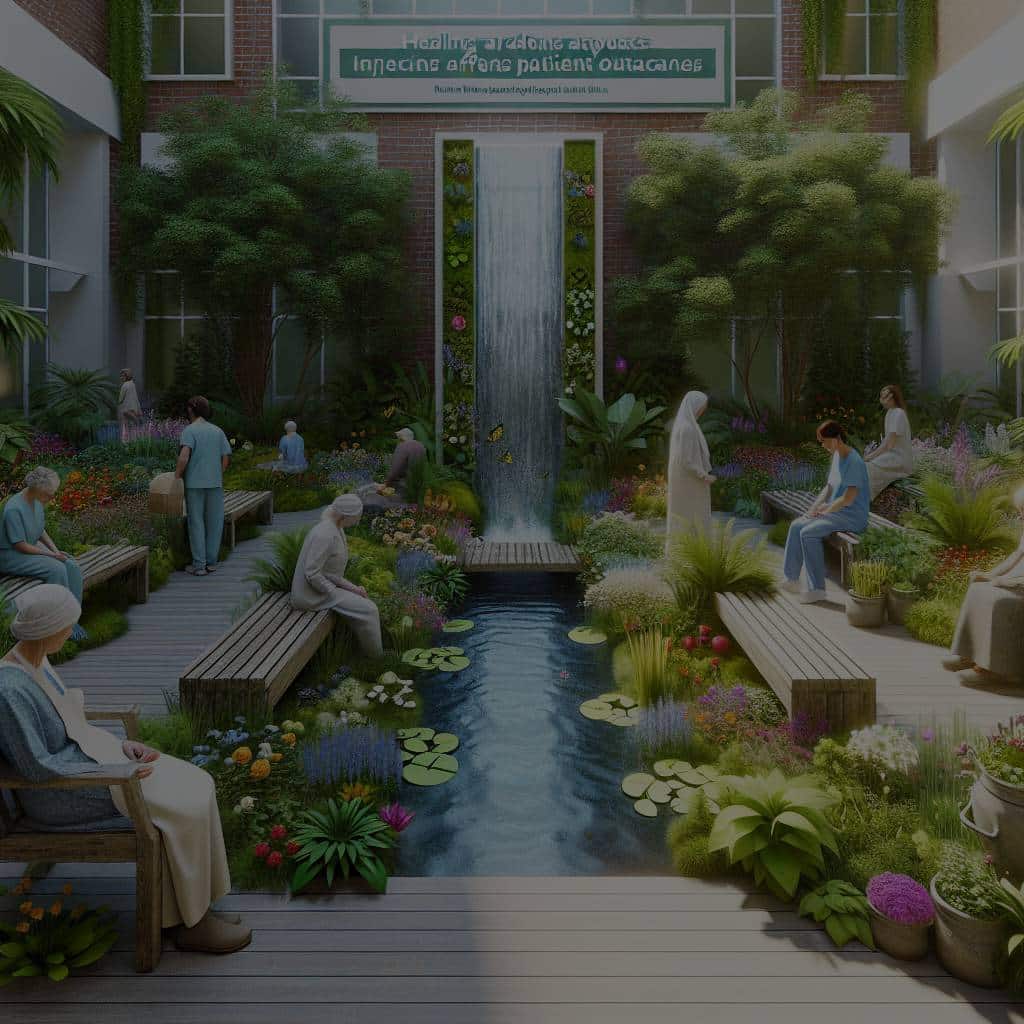In the hustle and bustle of hospitals, it’s easy to forget the importance of a calming environment for patients’ overall health. A modern trend, increasingly being adopted by hospitals worldwide, is the implementation of healing gardens. These spaces offer more than just a pleasing view; they provide a therapeutic escape for patients, helping them on their road to recovery. But how exactly does the design of these gardens impact patient outcomes? Let’s delve into the how and why of it all.
The Concept of Healing Gardens
Healing gardens have a rich history rooted in the belief that nature can have a profound effect on a person’s wellbeing. These are specially designed green areas within a hospital that harness the power of nature to provide therapeutic benefits to patients, staff, and visitors. They are more than just pretty spaces; they are carefully planned and maintained to promote healing and reduce stress.
Also to see : Can the Use of Medical Clowning in Pediatric Care Reduce Anxiety and Pain Perceptions?
The basic concept behind these gardens is simple. It’s all about creating a direct connection with nature, inviting its calming influence into the stressful environment of a hospital. Research has shown that simply being in a green environment can have a significant impact on a person’s mood and overall health. The unique design of healing gardens aims to maximize these benefits for everyone in the hospital environment.
Designing Therapeutic Spaces
When designing a healing garden, several factors come into play. The aim is to create a space that promotes healing, reduces stress, and makes patients, staff, and visitors feel comfortable and at ease. As such, the garden design must incorporate elements that encourage relaxation and mindfulness, while seamlessly fitting into the hospital’s existing environment.
This might interest you : How Can Companion Robot Pets Benefit the Elderly in Long-Term Care Facilities?
The design process starts with understanding the people who will be using the garden. This includes patients with varying health conditions, staff members who need a break from their demanding work, and visitors who are often dealing with their own stress and worry. The needs and preferences of these groups will heavily influence the garden’s design.
Next comes the selection of plants. A variety of green plants and colorful flowers is usually preferred to create a visually engaging environment. However, the choice of plants can also be influenced by their sensory qualities, such as fragrance and texture, that can enhance the therapeutic experience.
The design of the garden structures – such as seating areas, pathways, and water features – is another crucial aspect. These must be carefully planned to ensure ease of access, comfort, and safety for all users.
The Impact on Patient Outcomes
The design of healing gardens can have a profound impact on patient outcomes. While the physical beauty of the garden certainly plays a role, it’s the way the space makes patients feel that truly matters.
Patients often feel isolated and anxious in the clinical hospital setting. Healing gardens provide a nurturing environment that can reduce these feelings. Studies have shown that patients who spend time in these gardens experience less pain and anxiety, require fewer medications, and have shorter hospital stays.
The therapeutic benefits of nature can also promote physical healing. For instance, patients recovering from surgery or undergoing rehabilitation can use these gardens as a peaceful, pleasant space to exercise and improve their physical strength.
The Benefits for Staff and Visitors
While the focus of healing gardens is often on patients, it’s important to note that these spaces can also have a positive impact on hospital staff and visitors.
Hospital staff, particularly those in high-stress roles, greatly benefit from having a calm, green space to retreat to during breaks. The therapeutic environment can help reduce job-related stress and burnout, leading to higher job satisfaction and better performance.
Visitors, too, can find solace in these gardens. Having a loved one in the hospital is a stressful experience, and being able to spend time in a peaceful, natural environment can help reduce anxiety and improve overall wellbeing.
Future Directions in Healing Garden Design
As the benefits of healing gardens become more widely recognized, we can expect to see more of these therapeutic spaces popping up in hospitals and healthcare facilities around the world. Future designs will likely incorporate more advanced features, such as sensory gardens for patients with cognitive impairments and high-tech relaxation areas with VR nature experiences.
In conclusion, it’s clear that the design of healing gardens can have a significant impact on patient outcomes, as well as on the wellbeing of hospital staff and visitors. As we continue to explore this exciting intersection of healthcare and environmental design, we can look forward to a future where every hospital has a healing garden, and every patient has access to the therapeutic benefits of nature.
The Effect of Healing Gardens on Medical Staff and Visitors
Apart from patients, the medical staff and visitors also gain significantly from healing gardens. Individuals working in hospitals typically deal with high levels of stress, long hours, and emotional drain due to the nature of their work. Having access to an outdoor space like a healing garden can serve as a sanctuary where they can momentarily escape and recharge.
The green spaces in these gardens are known to promote relaxation and reduce stress, contributing to an improved mental state. As a result, hospital staff members may experience lower levels of burnout and higher job satisfaction. This, in turn, can lead to more effective performance and patient care, contributing to better patient outcomes.
For visitors, the hospital environment can be disconcerting and anxiety-inducing. The presence of a healing garden offers an opportunity to destress and gather thoughts. The calming effect of the garden can comfort visitors, improving their overall wellbeing. These gardens can serve as a place of solace where visitors can spend time away from the clinical setting, helping them to maintain emotional balance during challenging times.
The Influence of Biophilic Design on the Healing Environment
In recent years, the concept of biophilic design has come to the forefront. Biophilia—humans’ innate affinity for nature—has been a guiding principle in creating healing environments. Healing gardens, as a part of this built environment, harness the power of nature to promote a sense of wellbeing and speed up recovery.
The garden design incorporates various elements such as water features, seating areas, and a variety of plants. The sight and sound of water can have a calming effect on the mind, while seating areas provide a comfortable space for patients, visitors, and staff to relax and enjoy the surroundings. The selection of plants should engage multiple senses, offering a range of colors, textures, and fragrances to enhance the sensory therapeutic experience.
Conclusion: The Future of Healing Gardens in Healthcare
The profound impact of healing gardens on patient outcomes, as well as the wellbeing of hospital staff and visitors, is becoming more widely recognized. The incorporation of these therapeutic gardens into the built environment of medical centers has already begun, and it’s expected to become even more prevalent in the future.
Emerging trends in healing garden design could include sensory gardens specifically designed for patients with cognitive impairments, and technologically enhanced relaxation areas featuring virtual reality nature experiences. Such advancements may further enhance the benefits of spending time in these gardens.
In conclusion, the design of healing gardens plays a significant role in creating a healing environment within hospitals. It not only aids in patient recovery but also supports the wellbeing of the medical staff and visitors. It’s an exciting time in the intersection of healthcare and environmental design, and we look forward to seeing how these outdoor spaces evolve to offer even more therapeutic benefits.






